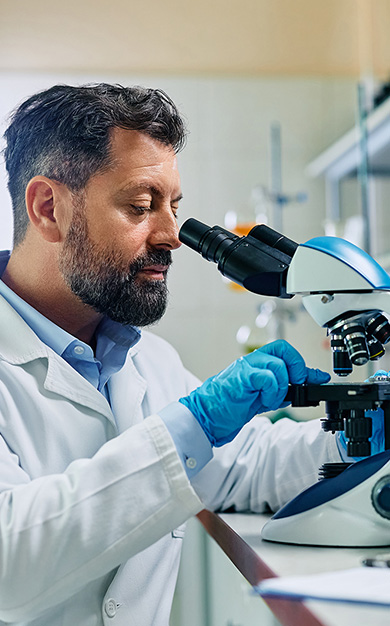Surviving Without Driving
Featuring
Katherine Freund
Founder and President, Independent Transportation Network of America
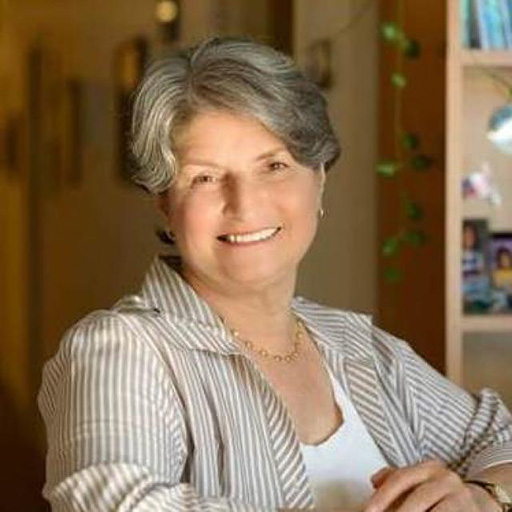

Katherine Freund
Founder and President, Independent Transportation Network of America

Join us and guest speaker Katherine Freund, who will discuss how aging impacts our driving skills, explore alternatives to driving, as well as what you can do if there are not currently driving resources in your area. Katherine is the Founder and President of Independent Transportation Network of America. She Chaired the Task Force to Study the Safe Mobility of Maine’s Aging Population, served on the Advisory Committee for the 2005 White House Conference on Aging and as a National Transit Institute Fellow. She has served for twelve years on the Transportation Research Board’s Committee on the Safe Mobility of Seniors where she Co-chaired the Joint Subcommittee on Transportation Options for Seniors. In 2013, Katherine testified about ITNAmerica and sustainable senior transportation before the US Senate Special Committee on Aging. In her home state of Maine, she is a member the Senior Driver Safety Coalition.
Download English Transcript PDF
MS. DIANA CAMPBELL: Hello. My name is Diana Campbell, and I am pleased to be here with you today for today’s Macular Degeneration Chat, “Surviving Without Driving.” This Chat is brought to you today by BrightFocus Foundation. Macular Degeneration Research is one of our programs here at BrightFocus. We fund exceptional scientific research worldwide to defeat Alzheimer’s disease, macular degeneration, and glaucoma, and we provide expert information on these heartbreaking diseases. You can find much more information on our website, www.BrightFocus.org. Now, I’m pleased to introduce today’s guest, Katherine Freund, who will discuss how aging impacts our driving skills, explore alternatives to driving, as well as what you can do if there are not currently driving resources in your area. Katherine is the founder and president of Independent Transportation Network of America, ITNAmerica. She chaired the Task Force to Study the Safe Mobility of Maine’s Aging Population, served on the Advisory Committee for the 2005 White House Conference on Aging and as a National Transit Institute Fellow. She’s served for 12 years on the Transportation Research Board’s Committee on the Safe Mobility of Seniors where she co-chaired the Joint Subcommittee on Transportation Options for Seniors. In 2013, Katherine testified about ITNAmerica and sustainable senior transportation before the U.S. Senate Special Committee on Aging. In her home state of Maine, she is a member of the Senior Driver Safety Coalition. Katherine, thanks so much for joining us today.
MS. KATHERINE FREUND: Oh, thank you very much for having me. Very happy to be here.
MS. DIANA CAMPBELL: Thank you. I guess we’ll start with just a quick intro as to what ITNAmerica is, and the Rides In Sight™ program in particular, and the overall mission.
MS. KATHERINE FREUND: Sure. ITNAmerica is the nation’s first and only national nonprofit transportation network. We support sustainable transportation, community-based transportation in all different kinds of communities across the country. We provide technology training, marketing, all kinds of support, and I guess that’s it.
MS. DIANA CAMPBELL: As the founder, what prompted you to found ITNAmerica and then, subsequently, the Rides In Sight component of it?
MS. KATHERINE FREUND: You know, something happens in everybody’s life that makes them pay attention to a particular unmet need—if someone in your family has cancer, you become interested in supporting nonprofits that help with cancer research or family support. In my case, there was a member of my family who was involved in a traffic accident—a traffic crash, actually. And when I say that, most people think it was a parent or an older person, but it was actually a child. And I’ll say right up front, he’s okay now, but when he was 3—it’s my son—when he was 3, he was actually run over by an older driver and he had a brain injury. He’s fine now, but when something like that happens in anyone’s life, they just kind of stop what they’re doing and say, “How in the world did this happen? And how do we fix it? How do we help people so that these kinds of unfortunate situations don’t happen to somebody else?” So, I started working on transportation for older adults.
I think the difference at that time between how other people were looking at it and the way I looked at it is: People were primarily saying, “How do we test older drivers? How do we screen them?” and the attitude was kind of, “What’s wrong with these older drivers?” and “How do we get them off the road?” And somehow or other, I just instinctively knew that that was not the right approach. First of all, it doesn’t solve the transportation problem. Every older driver who stops driving still needs transportation. But most of all, people’s bodies change as they age. Our bodies change as we age. And our ability to drive safely changes over time, and that’s not anybody’s fault; that’s life. That’s just life. And I really felt that that’s really penalizing people or pointing a finger at them or blaming them for the normal changes of aging, because those changes made safe driving either difficult or impossible, was clearly the wrong approach. And what was broken, in my view, was not the people but the transportation system. And so, I began thinking about: How do we create a transportation system that meets the needs of normally aging people? That was the approach that I took, and, well, let’s see. I got the idea in 1989; it is 2023. I’ve been working on it for a long, long time.
MS. DIANA CAMPBELL: That’s wonderful, and I love that you took a step back and took such a caring approach to an issue that, realistically, we’re all going to face, whether it’s sooner or later. And that really impresses me, and I think that’s great. I recently read a report from the AAA Foundation for Traffic Safety that nearly 83% of older drivers report never speaking to a family member or physician about their safe driving ability. What does your experience tell us?
MS. KATHERINE FREUND: Well, you know, what happens when people’s vision changes, reaction times change, cognitive abilities slow down, that happens very gradually over time, so people don’t really realize how much they’ve changed. And that’s normal. It’s hard to realize it. I’ve heard people say that aging is like a child growing. If you look at them every day, you don’t see it, but that you look back after a year, and it’s, “Oh, my goodness!” They’re taller, and they’ve got different teeth, and all the things that happen … the changes in your body when you age speed up, just like they’re faster when you’re little. And it does make a difference in people’s ability to drive safely. The changes in your body that affect your safe driving, believe it or not, begin at about the age of 35. And that’s usually a big shock to people. But that’s when it starts to happen. But it doesn’t affect safety at that age because you still have a tremendous number of skills. Driving is usually the most complex task that most people do. It’s a complex task, you know, your hands and your feet have to work in coordination, and your mind and your eyes and your ears—everything has to be working properly for you to be at the top of your game when you’re driving. And as that changes, you can compensate with your other skills and abilities.
But what happens is that about the age of 75—and I’m only 2 years away from that now, and I can already see changes in my body and my driving—what happens is that about the age of 75 that the changes of age speed up and overtake the compensation that you can make as a skilled driver, and the crashes begin to go up. The other thing that happens is people start to drive fewer miles. But then, that means that—and this is kind of counterintuitive because people are trying really hard to be safe—maybe they stop driving at night, maybe they stop driving in the snow or the rain, maybe they stop driving in busy times of day or busy locations, busy intersections, they avoid construction zones. You know, the compensations go on and on and on, but what happens is that even with all of those compensations—this is why it’s counterintuitive—people over 75 still have the highest fatal crash risk of any group except for the brand-new teenage drivers. They’re more dangerous for different reasons. But older people, as they get older, become riskier and riskier and riskier, and younger people, as they get older, move into the years when they’re safer and safer and safer. So, it’s a long process. I haven’t seen any research, and I actually think it still needs to be done, about how long that transition period takes. But after 30 years or so in the trenches here, my sense of it is that it’s about a 10-year transition, that final point where you need to really move from the driver’s seat into the passenger seat. So, it’s important to understand that it’s happening and to think about it and to try to make a plan so that you can stay mobile, stay independent, do the things you want to do, even if you need to limit or stop driving, which almost everybody does.
MS. DIANA CAMPBELL: Absolutely. I’d love to go more into that in just a moment, but we have a quick question from somebody listening: Are there particular symptoms that one should watch out for to know, or certain cues that they might kind of notice that it may be time to really rethink their driving plans?
MS. KATHERINE FREUND: That’s a great question. Yes, there are. And the different kinds of behaviors have to do with different skills and abilities, but people who get lost when they’re driving, that’s a huge symptom of some sort of cognitive problem. Routes that used to be familiar, all of the sudden, you can’t find your house or you can’t remember where the grocery store is. That’s a very, very important symptom. People may not necessarily speak about it, but if you speak with them and ask them, they may tell you. Another symptom is just driving at the wrong speed. Older people tend to drive slower—I think most people have noticed this. I know certainly my children accuse me of driving too slowly, but then again, I accuse them of—or I point out to them, shall we say—that they drive very fast. But what you’re doing, when you’re slowing down like that, is you’re slowing down the rate of sensory data that you’re taking in, and your processing of that data is slower, and so you’re just trying to process it so that you can do it. Merging with traffic, if you see older people taking a really long time trying to merge onto the interstate, that’s a symptom, and that’s because it becomes more difficult to judge the speed and distance of an oncoming vehicle.
It’s the same reason why … you know, older people turning left. When you turn left at an intersection, you’ve got to turn left across oncoming traffic, unless it’s a protected left-hand turn signal, and judging the speed and distance of the oncoming vehicle is so much more difficult that older adults’ crash rate turning left is 17 times higher than the average population. So that’s a symptom: merging with traffic, judging the speed and distance of oncoming. And then, the big serious one, which sometimes you’ll read in the newspaper of a crash where someone will drive into the bank or the Dunkin’ Donuts, go through the wall, or something, and they’ll swear that they were stepping on the brake, but they were actually stepping on the gas pedal. That’s actually got a name: That’s a gas-pedal accident. And that’s usually … people stop driving after that, but you really don’t want to wait until that happens. That happens because of mental confusion, and it also happens because of neuropathy, which is they lose the feeling in their feet, and they can’t tell which pedal they’re on. Those are the symptoms that really come to mind for me, mostly. And that’s all I can think of right now, but that was a great question. That was a great question.
MS. DIANA CAMPBELL: I agree, and those were really helpful answers. Thank you. So, looping back to where we’d left off before that question, you mentioned a 10-year transition between driver’s seat and passenger seat. What is the right time to consider alternatives to driving?
MS. KATHERINE FREUND: You know, I think at about the age of 75 you should be thinking about it. And it is really important for families. It’s a family issue. It’s absolutely a family issue. And even if adult children don’t live near their parents, it’s important to have the conversation. And I don’t know where they are now, but I wrote a number of blogs on this a number of years ago. I have some suggestions for our listeners about how to approach this conversation. And this may sound a little corny, but I actually always recommend beginning this conversation by telling someone that you love them. Because it’s a very difficult conversation, not just for adult children, but for their parents. The study that Liberty Mutual insurance company did a number of years ago said that, actually, parents were willing to have the conversation, but it was the adult children who were really, really frightened of having that conversation.
I’ll tell you how I approached it with my mother and my stepfather, and it worked pretty well. What I said was, “As you age, as we’re all going to age, we, your family, want for you to be as independent as you want to be. We want to support you in that, and we want to talk with you about the choices you want to make. So, God forbid, something happens to your health that you didn’t anticipate. For example, God forbid, you have a stroke, and you can’t drive. Or even if it’s not something as unpredictable as a stroke—what if you have to have your hip replaced? How are you going to get around? How do you want to get around when you can’t drive? And let’s have a plan for that. What public transportation is available? What paratransit is available? Is there an application process? Would you like to take a taxi? And is there a taxi company you can call so that when the time comes, you know what the number is? Is there a volunteer transportation service around?” And we do have—and we can talk about it later—we do have a toll-free hotline people can call to find out what’s available in their community, and we have a searchable online database. But the thing is that you can take the fear out of it by thinking of it in advance. And it’s hard to do because you don’t really want that to happen. Everybody wants to drive forever. And I understand that. But there’s a lot of things we want to be able to do forever, and you just can’t. That’s life.
So, how do you be independent? How do you be in control? How do you make your own decisions? And how do you work with your family to do that? That’s really important. And in my family, anyway, different children have different conversations, depending on what those children’s interest and expertise is. And we tried to do it in as loving and understanding way as we could. So, the person in the family who knew about insurance, he had the insurance conversation. And I knew about transportation, I had the transportation conversation. There was an adult child in the family with a medical background, and that person said, “You know, if you have to be taken to a hospital, which one do you want us to be sure you go to? And if you could just give us a list of the prescription drugs that you’re taking so that we’re sure that everything is taken care of for you?” Basically, just to help people be independent and get the information that you need to help them do that. And every family’s different, so what happened in my family may not be what happens in another family, and I’m aware of that, but my parents at first said, “We’re not having this conversation,” and then they said, “Okay, we get it. All right. What do you want to do?” You just have to be patient, and I think the most important thing is, if you’re talking to people about what they can’t do, and you’re talking to people about what they give up, it’s almost as though, you know, when your heart starts pounding and you can’t hear anything anymore, that’s what happens, I think. And what you really want is to have a conversation where people, however difficult it is, will be willing to talk with you, and you can be helpful to them. So, I hope I didn’t just talk for too long. But anyway, that’s what we did.
MS. DIANA CAMPBELL: No, no. Not at all. What a compassionate way to approach the topic. So many times you hear … I don’t know if this is on social media or online articles, but, “How do you know when it’s time to take the keys away?” And that just feels so much more aggressive and like a confrontation. And the conversation you’re describing is so caring and really a partnership, gathering the needs of your loved one, but also expressing support. So, that completely transforms that conversation into a different kind of thing. Before we get into how Rides In Sight works and all the great information you have about that, I just wanted to ask quickly if you could talk about the concept of co-piloting and how many people kind of tend to trend towards doing that and the dangers that that might present?
MS. KATHERINE FREUND: It’s just very, very, very, very dangerous, and lots of people do it. There’ll be someone with good vision who can drive but who has dementia—this is classic—and there’ll be someone with bad vision and no dementia telling the person who is driving what to do, or vice versa. And it’s just extremely dangerous, and I don’t want to share with you the horror stories of people getting killed, but they do. And so, if you notice that your loved ones are doing this, or if any of the people listening are doing this, please try to do something much safer than that. Use an alternative, find some options for how you can be independent, stay in your home, go to the places you want to go, without doing anything that risky. Nobody wants to be the person who hurts someone else. But that’s what happens. Or they get hurt themselves. So, thanks for asking that question. It’s very common practice, and it’s really high risk.
MS. DIANA CAMPBELL: Sure thing. Among other things, I mean, if there’s someone in my passenger seat that kind of wishes they were the one driving and gives me too many instructions that I really don’t need, it’s actually very stressful for the driver, too, in my opinion, just to hear constant input, and if you’re already having a little bit of trouble with processing, or you’re really trying to focus, even that alone can be stressful.
MS. KATHERINE FREUND: Yeah. I agree. And keep the radio off, and don’t be eating Burger King while you’re driving, you know? Just drive.
MS. DIANA CAMPBELL: [laughs] Agree. So, let’s talk a bit about your program, about Rides In Sight, and how that works and how it’s able to fill this gap for many, many people across the country that still want to maintain that independence but have decided on their own or in concert with their families that driving is no longer safe for them to do.
MS. KATHERINE FREUND: Yeah, sure. I’m happy to talk about that. It’s a resource that is available to the public at no charge. Actually, we didn’t think of doing it. A pharmaceutical company, Regeneron Pharmaceuticals, came to us and said, “Can you create a toll-free hotline that anyone anywhere in the country can call and find out: What are the transportation options available to them in their community?” And because of the work we do, we said, “Actually, yes, we can do that. We know what questions to ask to set up the right kind of database, and we build technology, so we can build that database and a website, and we can staff it. We will do it. But we would like to make that database available to the public for free. We are a charitable organization, it’s what we do,” and they said, “Fine. You can do that.” So, we built it. It took about a year to put all the information in it and research it, and we continuously clean and update that database, which … you can say something like that really quickly, but it’s actually a very big deal. There’s a lot of databases that are put up online, and then they’re not maintained. So, you want it to be as current as possible. So, we go through the whole United States, and when we finish, we start again and go through the whole United States again. There are about 9,000 transportation services available in the Rides In Sight database. And you can search that at RidesInSight.org. And you can call the number. Can I say what the number is?
MS. DIANA CAMPBELL: Of course, please do!
MS. KATHERINE FREUND: Okay. It’s (855) 607-4337. And that hotline’s open from 8 a.m. to 5 p.m. Eastern time, Monday through Friday, and if you call at a time when we’re not there, leave a message; we’ll get back to you the next business day. And if you happen to call about a community where we don’t know what your options are, we’ll find out what they are, and we’ll get back to you. It’s a very specialized database because it’s built for people with visual impairments and for people with mobility challenges, which is a lot of older adults. And so, there are a lot of different, for those of you who know software, a lot of different fields with information. We can, for example, if you’re a veteran and you want to know what’s available for veterans’ transportation. If you are lower income and you need rides that are no cost, we can tell you what’s available. If you need door-through-door service, if you need a wheelchair-accessible vehicle, if you are visually impaired, we can sort the database by your special needs, and then we can tell you what’s available for you in your community. You know, whether you can pay or not pay, whatever there is, we can do that. You can search the database online yourself. We are in the process—and the way it’s searched now is by county, but we are in the process of completely rebuilding that. We’re very excited about it. We’ve worked for a few years on how to get it just right. And our manager for that department, Joe Warren, this is his baby. And he runs everything perfectly. He’s very, very proud of this database and this service and makes sure that everything runs like a Swiss watch, I would say. So, we are rebuilding it, and when it is rebuilt, I am very happy to say that we’re going to follow all the new web content accessibility guidelines so it’s readable to JAWS, and it’s for people who are colorblind—it’s built so that people who are colorblind can see everything. And you can change the size of the font if you want it to be bigger font, so it’s very, very accessible, and that should be done—that rebuild should be done—in 4 months. For people who can’t search it now themselves, they can call that hotline. Again, it’s (855) 607-4337. And it is our mission and our pleasure to serve people and help them with their transportation.
MS. DIANA CAMPBELL: That’s just so wonderful. And I think it’s especially important for this audience of folks impacted by macular degeneration to have that phone number, rather than just the website. I know those of us who are younger, we say, “Well, it’s so great for older people now because there’s Uber and Lyft, there’s a million different things they can do,” and so many people have said how difficult that can be. Even just looking at the app or trying to verify the license plate or the picture of the driver, and it ends up causing a little bit more stress and concern for safety. For those of us that are younger, it seems so easy, but there’s plenty of people who don’t have smartphones, as well, so that hotline is so important.
MS. KATHERINE FREUND: Right.
MS. DIANA CAMPBELL: I wanted to just have you touch a little bit more about the door-to-door. I thought that was such a wonderful service that typically isn’t provided by taxis or rideshare. How does that work, or what does that look like for someone who might need a little bit more assistance getting in and out of the car and into their door? You know, perhaps with packages or with a walker or a cane or something like that?
MS. KATHERINE FREUND: Yeah, thanks for bringing that up. That is a very big issue for people. Sometimes they have a walker to fold or a cane or one of those rolling walkers, or sometimes they have a service animal with them. Nonprofit volunteer transportation has a different orientation—I would say attitude, mission—about what they do. The rideshare services, where they’re available in the higher-density areas, the cities—and first of all, I just want to say that Uber and Lyft do 70 percent of their rides in nine cities, so in suburban and rural America, where three out of four older adults live, there’s very spotty Uber and Lyft service, if there’s any, and there’s often spotty public transit service, so the nonprofit volunteer services are especially needed and desirable. So, the for-profit services, also, the drivers are independent contractors, which means that they can’t be told to provide door-through-door, arm-through-arm service. And I know that very often they do, but if they don’t, there’s very little you can do about it. So, the nonprofit services pride themselves, generally, on doing that. I know all the ITN services—that’s our national network—definitely provide door-through-door and arm-through-arm services: carry packages, fold walkers, offer an arm, and we train the drivers on how to offer assistance to someone with visual impairment so that they can take your arm and you can guide them. And that’s just part of the ride, right, that’s not extra, that’s part of the ride. If people didn’t need that kind of help, they’d probably be driving, right? So, we definitely do it, and we know it’s helpful to people, and helpful’s what we want to be.
MS. DIANA CAMPBELL: That’s wonderful. And I know after we spoke the other day, you know, my parents are in that demographic, 75+, and your staff was very helpful in sending me options in our area, and there were quite a few. And I do live between two large metropolitan cities, but I was really impressed to see the variety of services that were available that even having lived here for a long time I wasn’t familiar with. And we’ll pursue that in our family.
MS. KATHERINE FREUND: Great! Good for you.
MS. DIANA CAMPBELL: Thank you. I guess the question remains—and this will be the question we close out on—in particular, rural areas, let’s say, or less-populated areas in the country, if there are no options available, I know you’ve mentioned assistance in setting up affiliates in different areas, what does that look like? And how might one who’s inspired to kind of be active and looking to help themselves and others with setting up a service, what would that look like?
MS. KATHERINE FREUND: Well, that’s one of the major things that we do. Rides In Sight is one of four different programs that we have here. There’s another program called ITNCountry, and we have a tremendous amount of support and materials for communities that don’t have transportation options or don’t have volunteer transportation options, and we can help people set up a service, a brand-new service, in a community where it doesn’t exist. And it’s like a transportation network using community resources, local community resources, volunteers. It might be a service started through a local town. It might be started through a senior center or an agency on aging, it might be started through a county government. Any nonprofit organization or any government agency can start one of these services, and they’re extremely affordable, there’s a tremendous amount of materials. That’s kind of the heart of what we’re doing now. So, let me share one more phone number and one more website. So, if you live in a community that you feel doesn’t have the kind of transportation options you want, you can check that out by calling Rides In Sight. If there isn’t enough in your community or you don’t like what’s available in your community and you’d like the kind of door-through-door, arm-through-arm service, call this number: (207) 857-9001. That’s the ITNAmerica general number. Leave a message if someone doesn’t answer, and we will get right back to you. I’ll give you the number again: (207) 857-9001, or you can go to the ITNCountry website, and that’s ITNCountry.org, and there’s a form there, and that website is accessible, and fill out that form with your contact information, and we will be very happy to get back to you and help you get something set up.
MS. DIANA CAMPBELL: Thank you so much. This is wonderful information, and what a beautiful mission you have, Katherine. I think this has been really, really helpful. I’m sure we’ll be getting lots of questions, and hopefully you’ll be getting lots of calls. I think this is a topic that, whether people mention it or not, and oftentimes in our programming that we do here, it is a discussion topic, but certainly it’s something that in some way, shape, or form, it’s on everyone’s minds. So, thank you so much for being with us.
MS. KATHERINE FREUND: Well, thank you for inviting us. It’s our pleasure, and I wish everybody on the call the very best, and please reach out to us if you need some help, and we will do our best.
MS. DIANA CAMPBELL: Thank you. For the audience, I sincerely hope you found today’s Chat helpful. Katherine, before we conclude for today, are there final remarks you’d like to share with us?
MS. KATHERINE FREUND: No, I think you’ve asked me a lot of questions, and I think we kind of covered it. Thank you for the opportunity and would really encourage people to reach out to us with any questions at all about their transportation, whether what exists in the community now, or if they would like to talk with someone about getting started in their community, we’re here to help. So, thanks, Diana.
MS. DIANA CAMPBELL: That’s very much appreciated. Yeah, of course, of course. And I’m sure we’ll get the opportunity to make some connections to you from people and our listeners in other formats. At any rate, thank you so much, and this concludes the BrightFocus Macular Chat. Have a wonderful day.





BrightFocus Foundation is a premier global nonprofit funder of research to defeat Alzheimer’s, macular degeneration, and glaucoma. Since its inception more than 50 years ago, BrightFocus and its flagship research programs—Alzheimer’s Disease Research, Macular Degeneration Research, and National Glaucoma Research—has awarded more than $300 million in research grants to scientists around the world, catalyzing thousands of scientific breakthroughs, life-enhancing treatments, and diagnostic tools. We also share the latest research findings, expert information, and resources to empower the millions impacted by these devastating diseases. Learn more at brightfocus.org.
Disclaimer: The information provided here is a public service of BrightFocus Foundation and is not intended to constitute medical advice. Please consult your physician for personalized medical, dietary, and/or exercise advice. Any medications or supplements should only be taken under medical supervision. BrightFocus Foundation does not endorse any medical products or therapies.
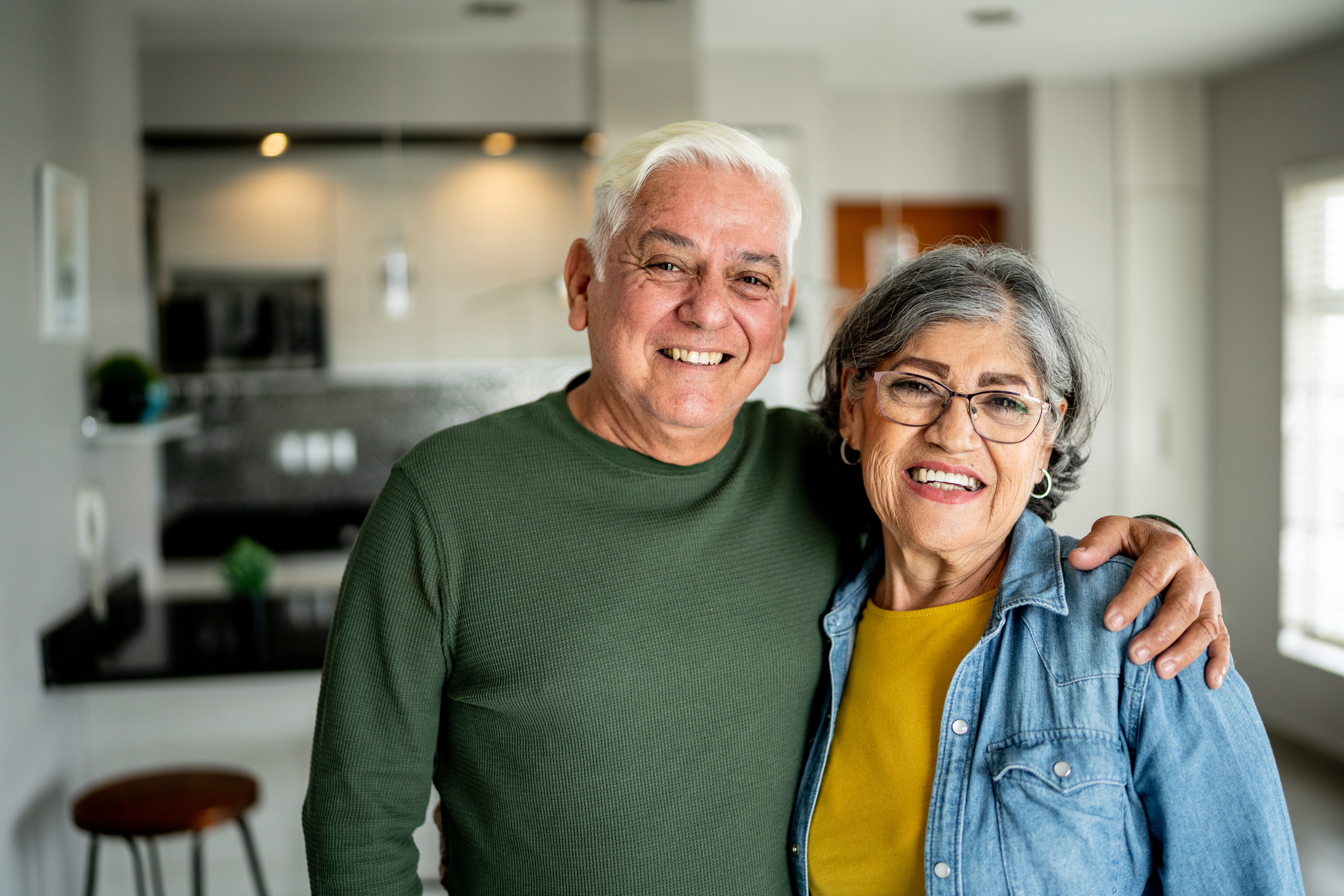
In recognition of National Caregivers Month, this episode explores the vital role of those who support individuals living with vision loss—whether family members, professionals, or volunteers.

Dr. Jeffrey Stern and Dr. Sally Temple, Principal Investigators and Co-Founders of the Neural Stem Cell Institute, will explain what stem cells are and share the latest updates from clinical trials.
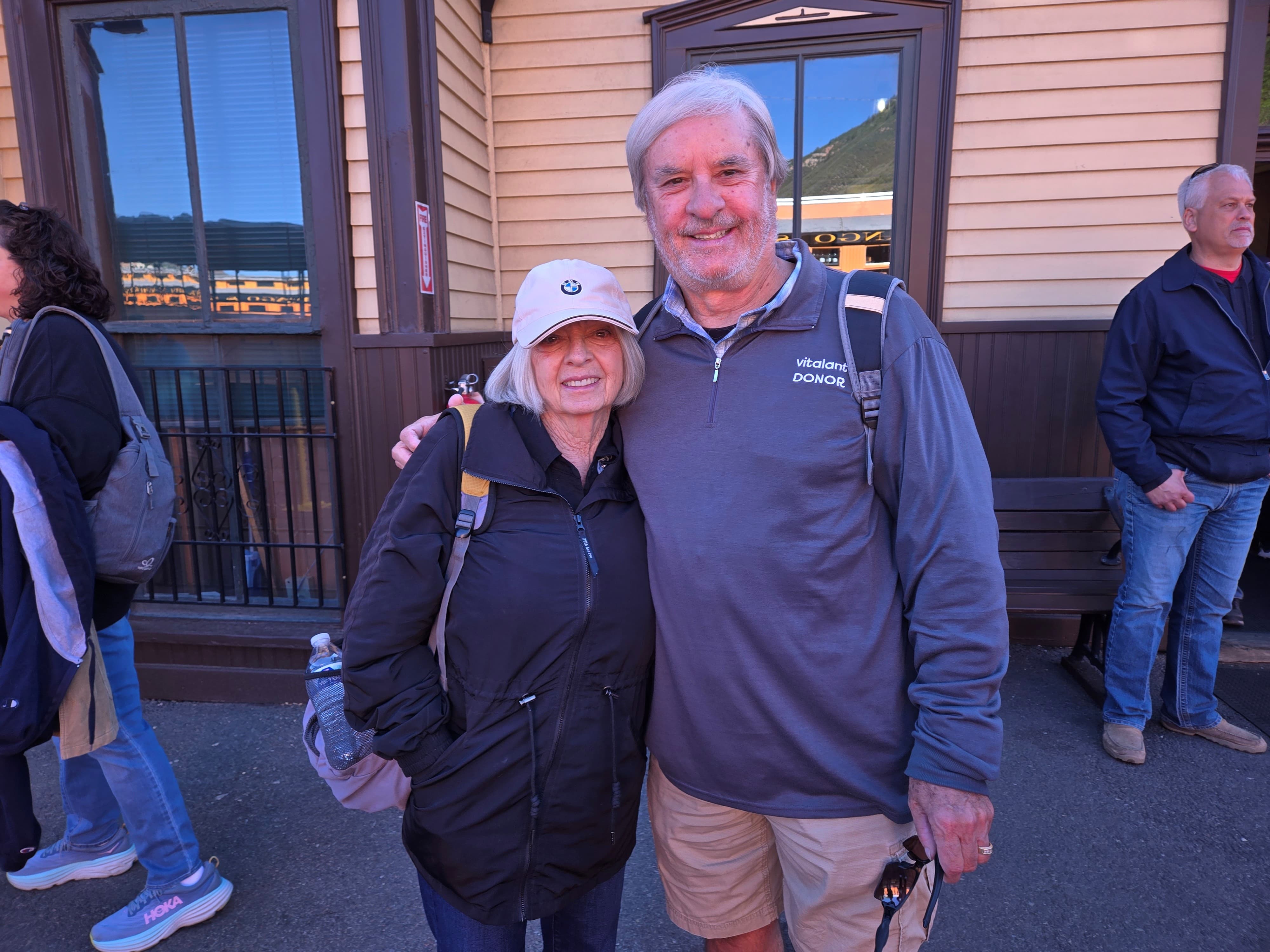
Dave and Leanna Palmer share their commitment to supporting Macular Degeneration Research.
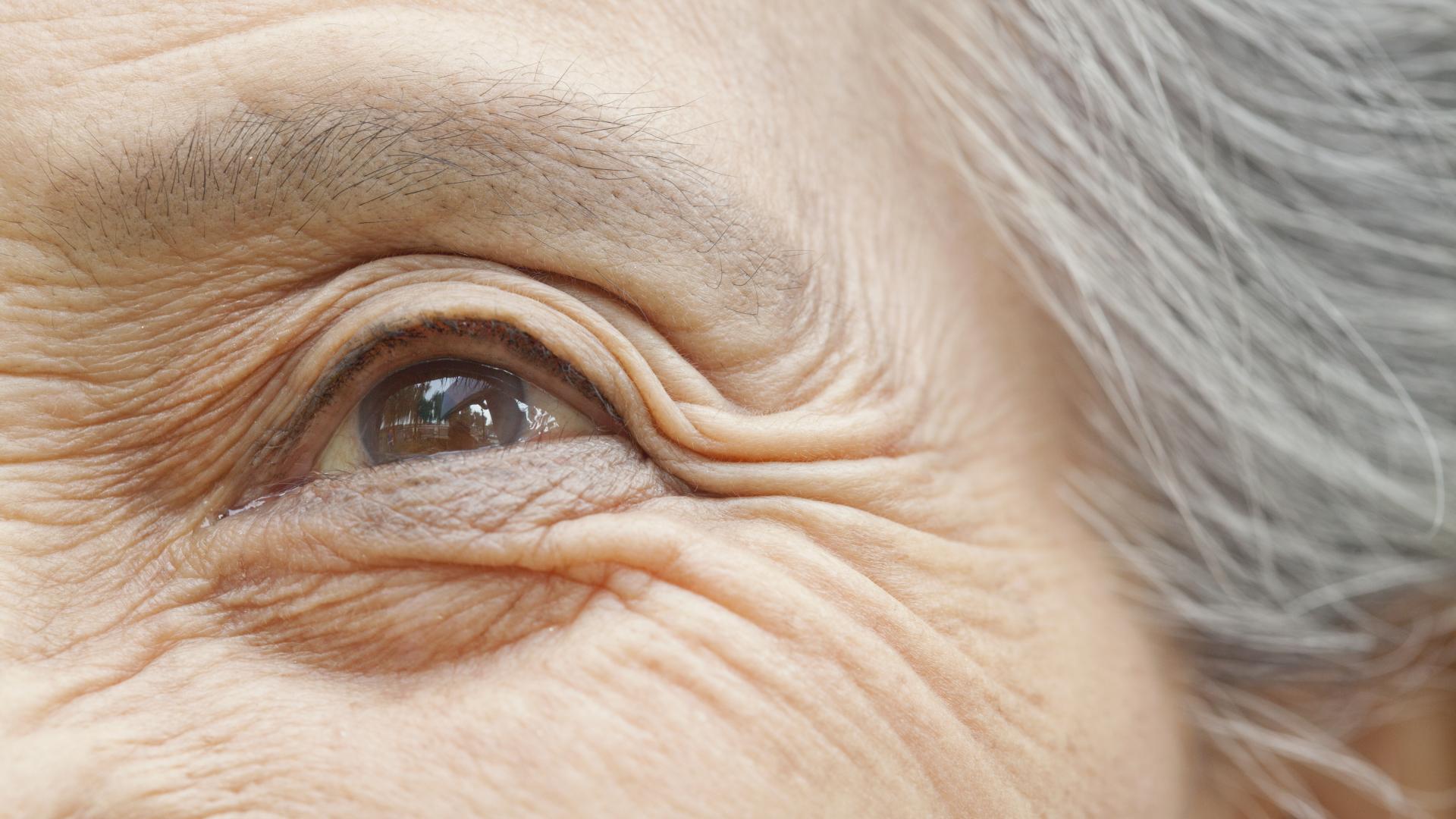
Join Dr. Sara Fard, a retina specialist at Illinois Retina Associates, as she explains the benefits of sustained GA treatment, including slowing the rate of vision loss, protecting retinal tissue, and supporting daily visual function.
Help Fight Macular Degeneration and Save Sight
Your donation helps fund critical research to bring us closer to a cure for this sight-stealing disease and provide vital information to the public.
Donate Today